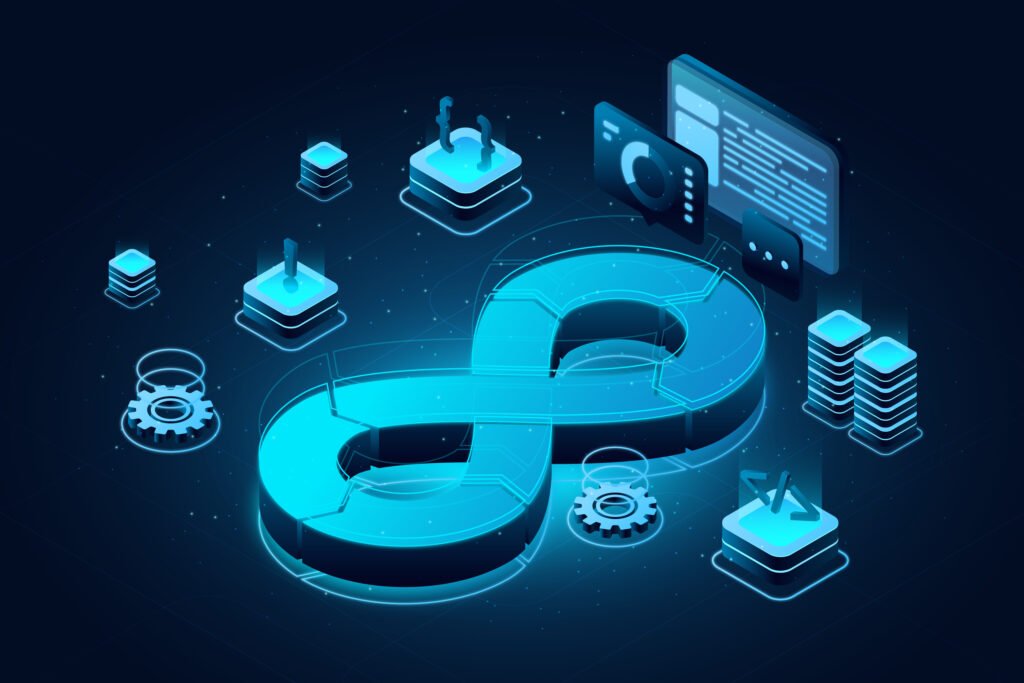Golang (or Go) has surged in popularity, and for good reason. Its simplicity, strong performance, excellent concurrency support, and robust standard library make it an attractive choice for building scalable backend systems, microservices, and command-line tools. Developers often praise its straightforward syntax and fast compile times.
However, beneath this appealing surface lie potential traps – common Golang mistakes that can trip up even experienced developers, especially those new to Go’s specific idioms and philosophies. These golang pitfalls can lead to subtle bugs, performance degradation, resource leaks, and maintenance headaches down the line. Recognizing and avoiding Golang errors early is crucial for leveraging Go’s full potential.
This post explores some of the most frequent golang development issues encountered in the wild. We’ll delve into golang anti-patterns related to concurrency, error handling, resource management, and more. Understanding these challenges is the first step; adopting golang best practices is the solution. We’ll also touch upon how expert Golang consulting benefits teams by helping them navigate these complexities and build robust, efficient applications from the start.
Pitfall 1: Mishandling Go’s Powerful Concurrency
Go’s goroutines and channels are arguably its killer features, but they are also a primary source of golang concurrency issues if not handled with care.
Goroutine Leaks: The Silent Resource Drain
One of the most insidious managing goroutines pitfalls is the goroutine leak. This happens when a goroutine starts but never finishes, often because it’s blocked indefinitely waiting on a channel or lock that will never be signaled, or because its lifecycle isn’t properly managed.
- Common Causes:
- Forgetting to close channels that ranged-over goroutines are waiting on.
- Not using context cancellation propagation correctly in long-running tasks or server handlers.
- Improper sync.WaitGroup usage (e.g., Add called inside the goroutine).
- Unbuffered channels where the sender or receiver disappears before the transaction completes.
- Impact: Leaked goroutines consume memory (stack space) and CPU cycles (if scheduled), potentially leading to degraded performance and eventual application crashes due to resource exhaustion. These can be hard-to-diagnose golang memory leaks common causes.
- Best Practices: Always have a clear exit strategy for every goroutine. Use the context package religiously for cancellation. Employ worker pools to limit concurrency. Use sync.WaitGroup correctly. Understand buffered vs. unbuffered channels.
Race Conditions: Unpredictable Chaos
A race condition occurs when multiple goroutines access shared memory concurrently, and at least one access is a write, without proper synchronization. The outcome depends on the unpredictable order of execution.
- Common Causes: Modifying shared variables (maps, slices, struct fields) from multiple goroutines without using mutexes (sync.Mutex or sync.RWMutex).
- Impact: Corrupted data, inconsistent application state, crashes that are extremely difficult to reproduce and debug.
- Best Practices: Protect shared mutable state with mutexes. Use channels for communication and passing ownership of data where possible (often safer). Leverage Go’s race detector (go run -race main.go, go test -race ./…) during development and testing – it’s an invaluable tool!
Deadlocks: The Standstill
A deadlock occurs when two or more goroutines are blocked forever, each waiting for the other to release a resource (like a channel or mutex).
- Common Causes: Complex channel interactions where sends/receives block indefinitely. Incorrect mutex locking order (e.g., Goroutine A locks Mutex1 then tries Mutex2, while Goroutine B locks Mutex2 then tries Mutex1).
- Impact: The involved parts of your application grind to a halt.
- Best Practices: Keep locking simple. Define a consistent lock acquisition order. Use select statements with default cases or timeouts for non-blocking channel operations where appropriate.
- Consulting Insight: Diagnosing subtle golang concurrency issues like leaks, races, and deadlocks often requires deep expertise and specialized tooling (like pprof for block/mutex profiles). Consultants can rapidly identify these issues and establish safe concurrency patterns for your team.
Pitfall 2: Ineffective Error Handling
Go’s explicit error handling (if err != nil) is a deliberate design choice, forcing developers to confront errors. However, golang error handling mistakes are surprisingly common.
- Ignoring Errors: Using the blank identifier (_ = someFunc()) to discard errors is perhaps the most dangerous pitfall. Errors signal exceptional conditions; ignoring them means your application might continue in an invalid state, leading to unexpected behavior or data corruption later. Always check errors.
- Losing Context: Simply returning err up the call stack often isn’t enough. The caller might not know where the error originated or under what circumstances. This makes debugging much harder. Use Go 1.13+’s error wrapping (fmt.Errorf(“operation failed: %w”, err)) to add context while preserving the original error type for inspection using errors.Is and errors.As.
- Overly Generic Handling: Catching err != nil and just logging “an error occurred” without specifics isn’t helpful. Log relevant context (function name, input parameters if safe) along with the error message.
- Inconsistent Error Types: Returning raw string errors (errors.New(“…”)) everywhere makes programmatic error handling difficult. Define custom error types or use sentinel errors (var ErrNotFound = errors.New(“not found”)) when callers need to react differently to specific error conditions.
- Consulting Insight: Establishing robust and consistent error handling strategies across a large codebase is critical. Consultants help define patterns, implement effective logging/monitoring for errors, and ensure teams aren’t just checking errors, but handling them meaningfully. This is key to avoiding Golang errors that cause production issues.
Pitfall 3: Resource Leaks (Beyond Goroutines)
Goroutines aren’t the only resource that can leak. Failing to release OS resources is another common golang development issue.
- HTTP Response Bodies: Forgetting to close the Body of an http.Response (resp.Body.Close()) is extremely common, especially for newcomers. This leaks network connections and file descriptors. Use defer resp.Body.Close() immediately after a successful HTTP request where err == nil.
- File Handles: Files opened with os.Open or os.Create must be closed (file.Close()). Again, defer file.Close() is the idiomatic solution.
- Database Connections: While database/sql handles connection pooling, failing to close sql.Rows after querying (rows.Close()) can hold database connections open longer than necessary, potentially exhausting the pool. Use defer rows.Close().
- Consulting Insight: Code reviews by experienced Go developers are highly effective at spotting these types of resource leaks. Consultants can also help set up linters (like golangci-lint) with appropriate rules to automatically catch many of these common Golang mistakes.
Pitfall 4: Misusing Interfaces and Abstraction
Go’s interfaces are powerful due to their implicit satisfaction, but they can be misused.
- Monster Interfaces: Defining large interfaces with many methods violates the Interface Segregation Principle and makes them hard to implement and test. Keep interfaces small and focused on a specific capability (e.g., io.Reader, io.Writer).
- Premature Abstraction: Creating interfaces before they are needed can add unnecessary complexity. Start with concrete types and introduce interfaces only when you need to decouple components or support multiple implementations. “Accept interfaces, return structs” is a common Go proverb.
- Overuse of While interface{} (the empty interface) allows storing values of any type, it bypasses static type checking. Excessive use leads to runtime type assertions (value.(Type)), potential panics if the assertion fails, and less readable code. Use it sparingly, typically when dealing with truly unknown data structures (like decoding JSON).
- Consulting Insight: Understanding idiomatic Go design, including the effective use of interfaces, is crucial for maintainability. Consultants can guide teams on designing clean APIs and avoiding golang anti-patterns related to premature or excessive abstraction.
Pitfall 5: Neglecting Package Management and Project Structure
While Go Modules largely solved dependency management chaos, teams can still encounter issues with project organization.
- Circular Dependencies: Package A imports Package B, and Package B imports Package A. This is forbidden by the Go compiler and usually indicates a design flaw where concerns are not properly separated.
- “God” Packages: Creating massive packages that contain unrelated functionality makes the code hard to navigate, test, and refactor. Aim for cohesive packages focused on a single domain or responsibility.
- Inconsistent Structure: Lack of a clear, agreed-upon project layout can make it difficult for new team members to understand the codebase. While there’s no single official layout, adopting a standard (like the “Standard Go Project Layout,” even if controversial, or a custom team standard) helps.
- Consulting Insight: For larger projects, structuring code effectively is paramount. Consultants bring experience from various projects, helping teams establish scalable project layouts, manage dependencies correctly using Go Modules, and refactor code to break circular dependencies or unwieldy packages. Addressing these golang development issues early prevents major refactoring later.
How Expert Golang Consulting Helps Avoid These Pitfalls
Recognizing these golang pitfalls is the first step, but consistently applying golang best practices requires discipline, experience, and sometimes, an outside perspective. This is where the golang consulting benefits become clear, providing targeted expertise to accelerate development and improve quality. Generally, expert consultants can offer:
- Expert Code Reviews: A fresh pair of eyes trained to spot subtle common Golang mistakes, resource leaks, concurrency issues, and golang anti-patterns.
- Architectural Guidance: Advice on designing scalable, maintainable Go applications and establishing sound project structures.
- Performance Tuning & Debugging: Deep knowledge of Go’s runtime and tooling (pprof) to track down elusive golang concurrency issues or performance bottlenecks.
- Establishing Best Practices: Help defining and documenting team-specific coding standards, error handling strategies, and testing methodologies.
- Team Training & Mentoring: Addressing learning golang challenges through targeted training and mentoring to upskill your team.
- Faster Problem Resolution: Quicker identification and resolution of complex golang development issues.
Why Partner with Alagzoo for Your Golang Needs?
While general consulting offers benefits, choosing the right partner is crucial. At Alagzoo, we specialize in Golang and focus on delivering tangible results for your business by addressing the very pitfalls discussed here. Here’s why teams choose Alagzoo for Golang Consulting:
- Deep Golang Expertise: Our team possesses in-depth knowledge of Go internals, concurrency models, performance optimization techniques, and the broader Go ecosystem. We don’t just know Go; we understand how to apply it effectively to solve real-world business problems.
- Focus on Pragmatic Solutions: We prioritize practical, maintainable solutions over theoretical perfection. We work with you to understand your specific context and deliver strategies that fit your team’s capabilities and project goals, helping you avoid common golang development issues from the start.
- Best Practice Implementation: We help instill golang best practices tailored to your environment, covering everything from error handling and concurrency patterns to testing strategies and project structure, reducing the likelihood of encountering golang anti-patterns.
- Accelerated Development & Problem Solving: Facing persistent golang concurrency issues or performance bottlenecks? We leverage our experience to diagnose problems faster and implement solutions efficiently, getting your project back on track and accelerating your time-to-market.
- Collaborative Partnership: We see ourselves as an extension of your team. We work closely with your developers through code reviews, pair programming, workshops, and architectural sessions to ensure knowledge transfer and long-term success long after our engagement ends.
- Proven Track Record: We help businesses build robust, scalable, and high-performance applications using Golang, turning potential golang pitfalls into well-managed processes.
Choosing Alagzoo means investing in a partner dedicated to helping you leverage Golang effectively while sidestepping common mistakes and building for the future.
Conclusion: Build Robust Go Applications with Awareness and the Right Partner
Golang offers a compelling platform for modern software development, but it’s not immune to pitfalls. Mishandled concurrency, ineffective error handling, resource leaks, poor abstractions, and disorganized structure are common Golang mistakes that can undermine your project’s success.
By being aware of these potential issues, embracing golang best practices, utilizing Go’s powerful tooling, and fostering a culture of careful code review, teams can significantly reduce risks.
However, navigating the nuances can be challenging. If your team is struggling with avoiding Golang errors, needs to optimize performance, or wants to ensure you’re building on a solid architectural foundation, partnering with experienced Golang specialists is often the most effective path forward.
Ready to elevate your Golang development and avoid costly pitfalls?
- Learn more about our tailored Golang Consulting solutions: Visit Alagzoo Golang Consulting
- Discuss your specific challenges: Contact Us Today to schedule a consultation and see how Alagzoo can help you build better, faster, and more reliable Go applications.
FAQs
1. What are the most common concurrency issues in Golang, and how can expert consulting help?
Concurrency issues, such as goroutine leaks, race conditions, and deadlocks, are frequent pitfalls in Golang development. Mishandling goroutines or forgetting to properly synchronize shared data can lead to resource exhaustion, crashes, and unpredictable behavior. Expert consulting can help by diagnosing these issues, recommending best practices like using sync.WaitGroup, context propagation, and Go’s race detector, and setting up safe concurrency patterns.
2. How can ineffective error handling in Golang impact my application’s performance?
Ignoring or improperly handling errors in Go can result in silent failures, data corruption, or hard-to-track bugs. Without wrapping errors with meaningful context or using specific error types, debugging becomes much harder. Consultants can help by establishing robust error-handling strategies, ensuring proper error checking, and integrating advanced logging techniques to make error handling more transparent and effective.
3. How can Alagzoo help with concurrency issues in Golang?
Golang’s concurrency model, while powerful, can introduce pitfalls like goroutine leaks, race conditions, and deadlocks. Alagzoo’s Golang experts specialize in diagnosing and resolving these issues, using advanced tools like pprof and race detectors. We help teams establish safe and efficient concurrency patterns, optimize goroutine management, and apply best practices to avoid costly performance bottlenecks and application crashes.
4. Can Alagzoo help improve error handling in my Golang project?
Yes! Alagzoo understands the importance of robust error handling in Golang. We assist in implementing effective strategies such as error wrapping, creating custom error types, and avoiding the dangerous practice of ignoring errors. Our experts ensure that your team is not only checking for errors but handling them with proper context, helping to prevent production issues and make debugging easier.
5. How does Alagzoo approach project structure and code organization in Golang?
At Alagzoo, we help teams establish clear and maintainable project structures. We guide clients through organizing code effectively, avoiding circular dependencies, and adhering to best practices in Go project layout. We focus on creating modular, cohesive packages and managing dependencies using Go Modules to ensure that your codebase is easy to navigate, scale, and maintain.




